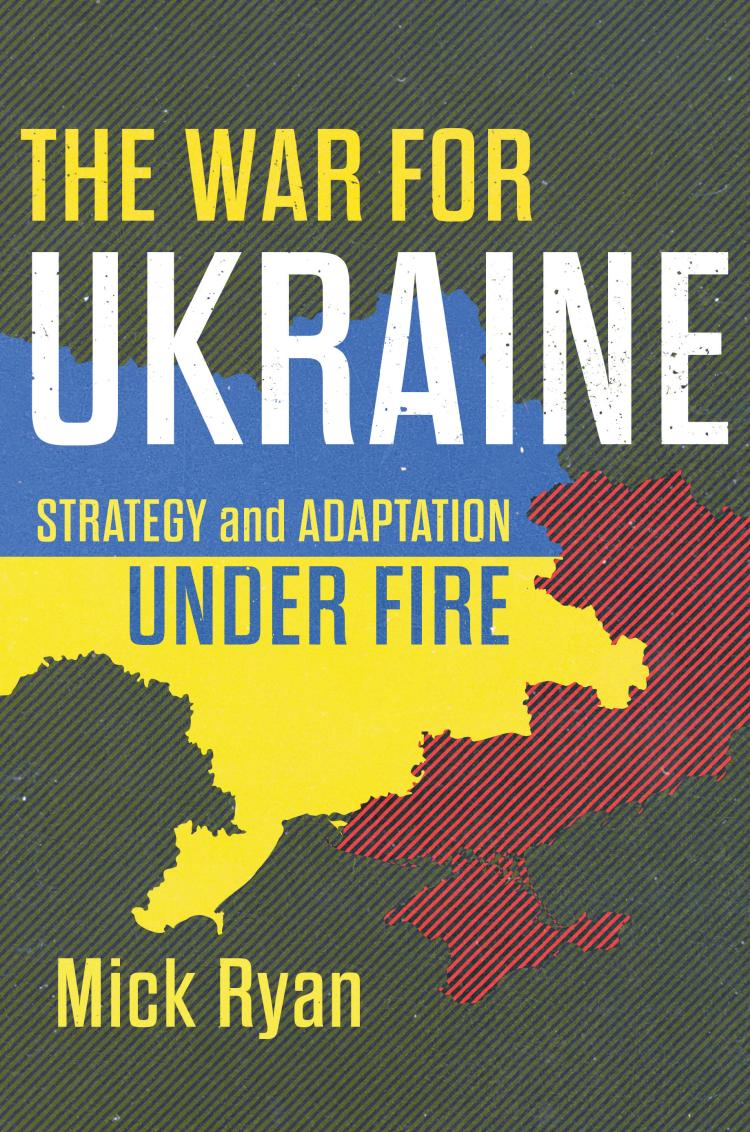The War for Ukraine
Strategy and Adaptation Under Fire
- Subject: Fall 2024 Catalog | Current Affairs
- Format:
Hardcover
- Pages:
360pages
- Illustrations:
1 map
- Published:
August 15, 2024
- ISBN-10:
1682479528
- ISBN-13:
9781682479520
- Product Dimensions:
9 × 6 × 1 in
- Product Weight:
24 oz
Overview
The Russo-Ukraine War is a vital learning opportunity for military strategists across the globe. The first and clearest lesson to be gleaned from it is this: the soundness of a military’s strategy and the nimbleness with which it can adapt to unforeseen circumstances are the two most important factors in deciding victory or defeat. The War for Ukraine analyzes the war through these twin lenses of strategy and adaptation, detailing how each army has succeeded or failed to plan for and adapt to this twenty-first century war.
Author Mick Ryan examines the foundations of Ukrainian and Russian strategy for their ongoing war, looking back over several decades to reveal how both sides have evolved their military strategy and force structure. Each has undertaken institutional-level reforms of their military and national security enterprises in the decade leading up to this war. But because the emergent behavior of military forces after fighting begins cannot be fully predicted, these prewar reforms only constitute a starting point for adaptation during the war. Part I of the book covers the role of strategic leadership, with a focus on evolution of strategy since February 2022. From there, the second part of the book delves into how the Ukrainians and Russians have adapted their tactics, organizations, operational approaches, and strategic foundations for war-making throughout the conflict.
Central to this discussion are the ways that, regardless of cutting-edge technology, human elements have remained a crucial deciding factor in Ukraine. Ryan shows how good leadership allows a nation to navigate the ambiguity and uncertainty of conflict, while poor leadership leaves it vulnerable to surprises. Likewise, The War for Ukraine offers case studies of the importance of an institution’s ability to nurture and reward human learning as it relates to combat. The book provides strategists, policymakers, and military leaders with a basis from which to plan for constant adaption in military organizations. General readers of contemporary global conflict will also find The War for Ukraine of great interest.
Author Mick Ryan examines the foundations of Ukrainian and Russian strategy for their ongoing war, looking back over several decades to reveal how both sides have evolved their military strategy and force structure. Each has undertaken institutional-level reforms of their military and national security enterprises in the decade leading up to this war. But because the emergent behavior of military forces after fighting begins cannot be fully predicted, these prewar reforms only constitute a starting point for adaptation during the war. Part I of the book covers the role of strategic leadership, with a focus on evolution of strategy since February 2022. From there, the second part of the book delves into how the Ukrainians and Russians have adapted their tactics, organizations, operational approaches, and strategic foundations for war-making throughout the conflict.
Central to this discussion are the ways that, regardless of cutting-edge technology, human elements have remained a crucial deciding factor in Ukraine. Ryan shows how good leadership allows a nation to navigate the ambiguity and uncertainty of conflict, while poor leadership leaves it vulnerable to surprises. Likewise, The War for Ukraine offers case studies of the importance of an institution’s ability to nurture and reward human learning as it relates to combat. The book provides strategists, policymakers, and military leaders with a basis from which to plan for constant adaption in military organizations. General readers of contemporary global conflict will also find The War for Ukraine of great interest.




